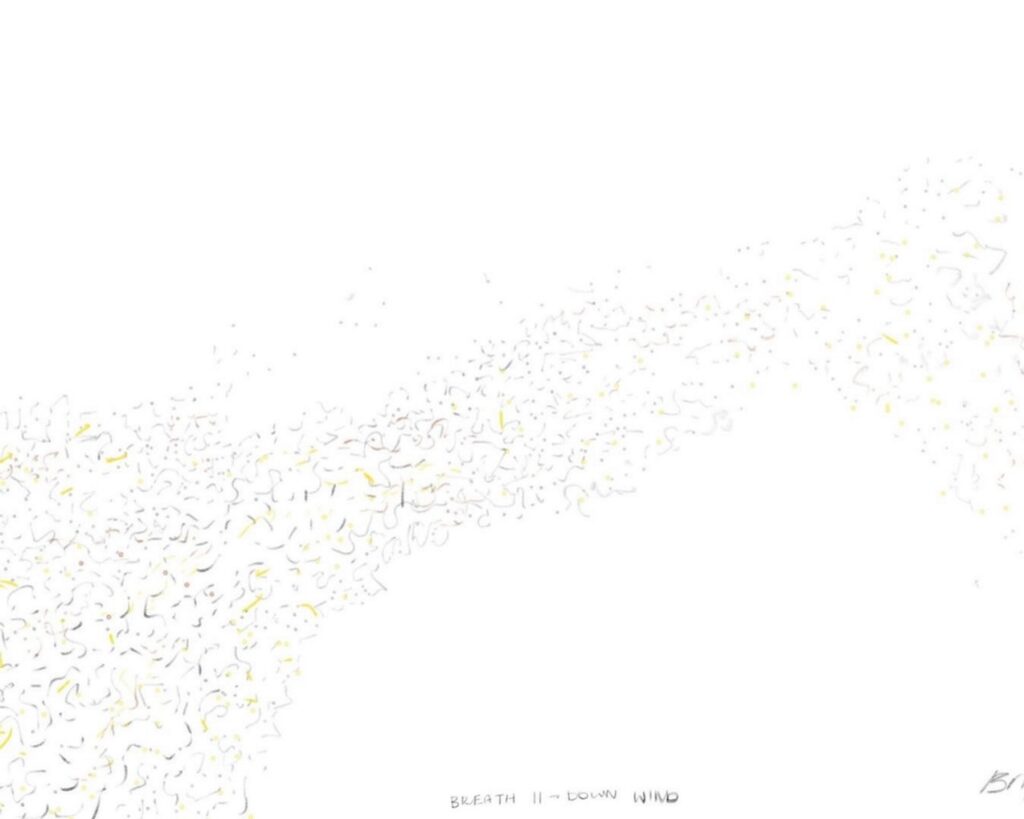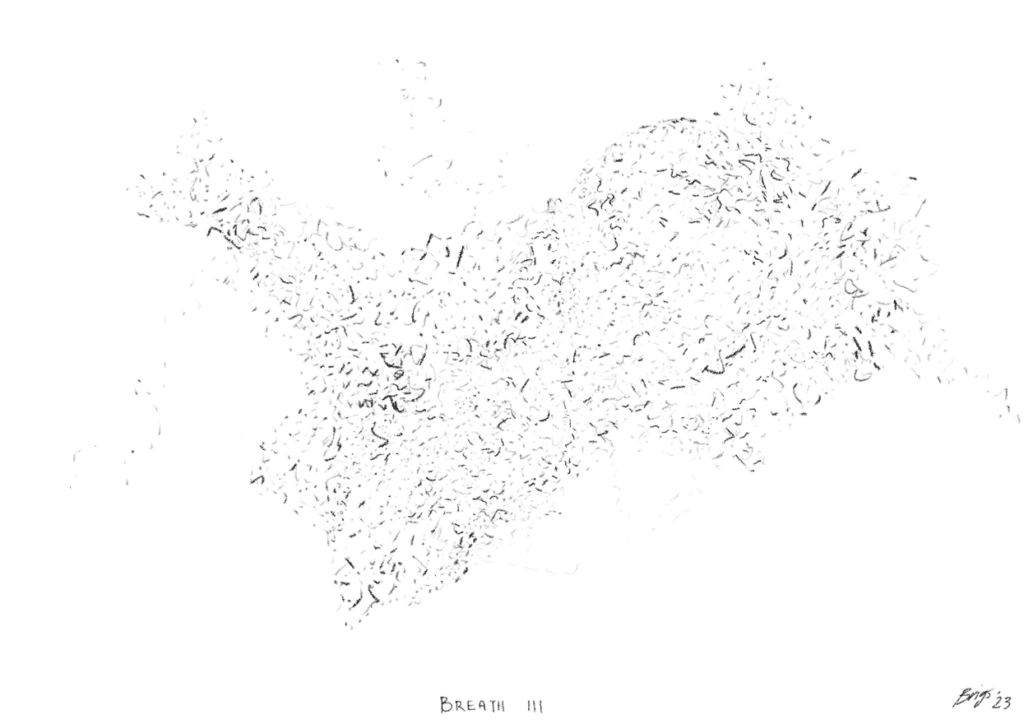Breath in the extractive zone: “It should be fine, as long as I don’t lick it.”

Image Credit: The extractive zone © Brigitta Stone-Johnson 2023
We spent the last day of the “post-extractivist landscapes and legacies”conference outside the city. After a morning at the Abbeyleix Bog Project, we visited the remains of the Glendalough lead mine. This section of ancient landscape was bleached white, where neither moss nor fern would grow. It is a landscape of schist and white quartzite baring mineral fragments, with its own beauty. I collected a stone and was asked if I thought it wise. My response was “it should be fine, as long as I don’t lick it.” Saying this brought home some ideas I had been pondering as the conference speakers presented their work. Themes of bodies, residues, and vague terrains repeatedly entered the conversations. Reflecting on particulate issues, dust, and the need to empty extractive zones of meaning to facilitate extractive acts appeared to contrast with the lived experience and earth-knowledge of inhabitants and researchers who live and work within extractive landscapes.
Since a conference in Helsinki in December 2022, the KUVA research days, my mind has been on the particulates of extraction, that which we cannot see, that which we breathe in, that which is captured in snow piles and accumulates on the surfaces of our cities, and homes. Over the past months in my home city, Johannesburg, I have watched as the vast mine tailings to the south of the city have been eaten away for re-mining, and I struggled to breathe as the air quality worsened, the wind scattering fine particulates into the atmosphere. These moments have led me to begin an artistic reflection on the relationship between bodies, cities, and extractive particulates, which traverse contexts and stray out of bounds.
It was the naturalist Alfred Russel Wallace who, in his essay on the importance of dust in 1898, first described dust as “matter in the wrong place,”[1] noting that “whatever injurious or disagreeable effects it produces are largely due to our own dealings with nature.”[2] In the same essay, Wallace also reflects on how dust is necessary for life, creating many of the phenomena we find most beautiful: blue Irish skies, Johannesburg’s fiery sunsets, and the mists clouds, rains, and snow vital for sustaining life on the earth. Wallace illustrates the complex relationship between dust, which gives life, and conversely, extractions and eruptions, which alter climates and affect the earth’s capacity to sustain life. Dust is familiar to us, homely. Yet dust is also the accumulative, climate-altering particulate of extractions and extractive zones, which blows upon the winds, traverses beyond the immediate zones, and travels across borders and continents.
This is one of the critical issues of life in extractive zones, how fine particulate clings to humans, animals, and more than human beings who live in extractive and post-extractive terrains. How these beings breathe, touch, and lick in relationship with “dust”. Perhaps one of the most complex stories to tell about extraction-driven climate change is the weaving effect of extractive particulate onto the body. This brings geological scale into the everyday lives of all those who breathe. Throughout the “post-extractivist landscapes and legacies” conference, my reflections turned to extractive matter and particulates that we lick, which enter bodies and alter them, even to the point of troubling breathing in the extractive zone. Below are the series of note sketches I produced during and after the conference. They explore relationships between particulates, atmospheres, and breath in an attempt to relate the bodies and beings who dwell within these zones to particulates breathed in and particulates of extractive terrains. Figure 1. contemplates the depth and height of the extractive zone. Figure 2. contemplates what it means to be breathing downwind of extractive mining zones. Figures 3 + 4 (breath III, IV + V) contemplate breath as a way of materialising extractive matter.




– BRIGITTA STONE-JOHNSON , University of the Witwatersrand
[1] Wallace, “The Importance of Dust: A Source of Beauty and Essential to Life (1898)”, 69.
[2] Wallace, 69.